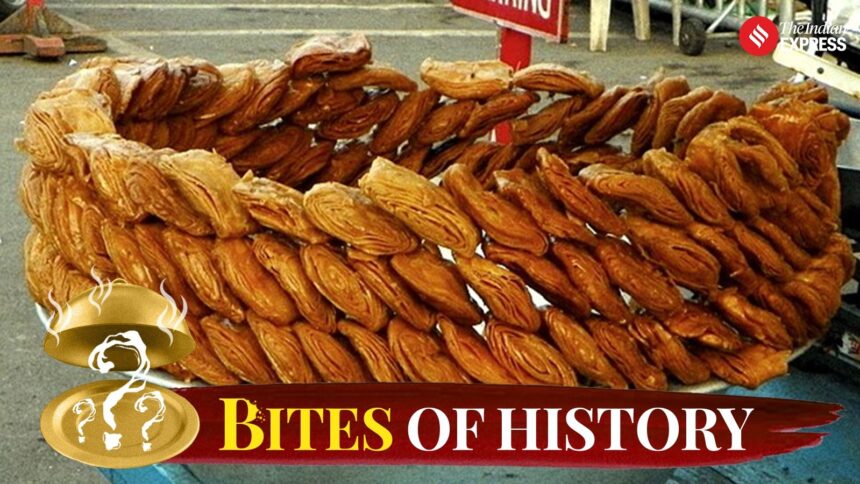Odisha’s iconic sweet, khaja, has been ranked among India’s top 10 best sweet pastries by TasteAtlas. GI-tagged and carrying deep religious significance, this flaky sweetmeat originates in the Mauryan empire. Beyond the borders of Odisha, khaja is also found in different forms in Bihar and Andhra Pradesh, making it a temple staple.
According to the global culinary guide, there are many regional varieties of khaja — the ones from Silao and Rajgir (in Bihar) are characterised by their puffiness, while khajas of the coastal part of Andhra Pradesh are dry on the exterior and filled with sugar syrup on the inside.
For the next installment of our series , where we delve into the delicious history of India’s iconic culinary treats, celebrity chef Ananya Banerjee takes us through the history and legacy of Odisha’s iconic sweet.
“Khaja is believed to date back over 2000 years, making it one of the oldest surviving Indian sweets. Its origins are traced to Kalinga (ancient Odisha), where it was a prized offering in temples and royal courts,” said Banerjee.
According to her, what makes khaja stand out is its association with the Jagannath Temple in Puri, where it is one of the chappan bhog (56 offerings) served to Lord Jagannath daily. It’s also sold in large quantities around the temple, becoming a symbol of religious devotion and cultural pride.
Khaja is a multi-layered, crisp, and flaky dessert that is deep-fried and soaked in sugar syrup. Banerjee shared that 4 primary steps go into preparing this delicacy:
1. Dough Making: A firm dough is prepared using maida and ghee. It is rolled out into thin sheets.
2. Layering: The dough sheets are stacked, rolled, and folded—this gives khaja its distinct layered texture. Often, a paste of flour and ghee (known as sata) is applied between layers.
3. Shaping and Frying: The pieces are cut into rectangular or diamond shapes and deep-fried until golden and crisp.
4. Sugar Bath: Once fried, the hot khajas are dunked into thick sugar syrup. The outer layer absorbs just enough syrup to become glossy and sweet without losing its crunch.
As a Mahaprasad of Lord Jagannath, it holds deep spiritual value and religious significance. Pilgrims often carry it back home, spreading its fame far and wide. The contrast of crispy, flaky layers with a soft sugar glaze gives khaja a delightful mouthfeel,” said the chef. Even though it is sweet, it is not overly cloying and happens to stay fresh for several days without refrigeration, making it a great travel sweet or gift, she added.
Suffice it to say that khaja is not just a dessert—it’s a culinary heritage of Odisha. This sweet treat is a symbol of celebration and can be found during festivals, weddings, and temple visits.








